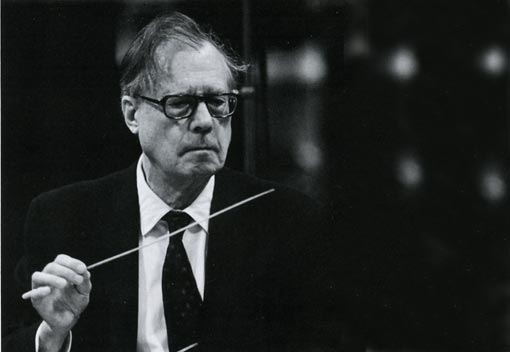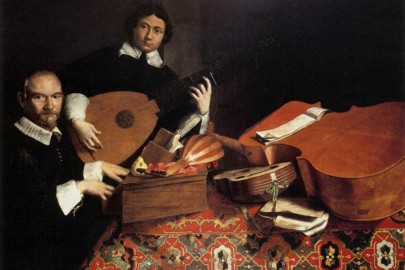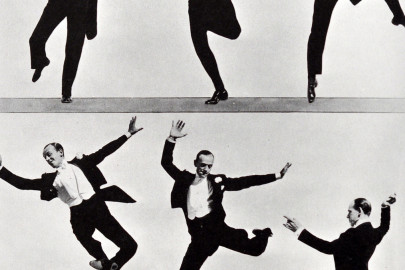Mahlerman explains what conductors actually do in an orchestra, with a look at three of the greats…
A few weeks ago revered dabbler Nige blogged on the latest BBC red-button gizmo Maestrocam, a most unwise addition to our listening pleasure at The Proms, which concentrates a camera exclusively upon the antics of the conductor, with added ‘expert’ commentary. He went on to add that his late father took a pretty dim view of the conducting profession (the word ‘racket’ was used), the evidence produced being the Cheshire Cat grin of certain dance-band leaders toward the audience, while vaguely beating time with a very big stick – he probably had in mind the oleaginous Joe Loss.
There are many that share this view and, in fact, are quite prepared to expand it to include, as they see it, the charlatans and mountebanks that populate the serious music arena collecting, as some do, high five figure sums for a single night’s work, while not emitting a sound, save the odd sigh or grunt.
Without particularly taking an opposing view to that of Nige’s dad, I would say that some of my most magical musical experiences have been due solely to the presence of a particular conductor in a hall, and his almost unfathomable ability to make one hundred odd people see things his way, and then deliver. Often the conductor himself is not quite sure how it happens – and the players still less. But happen it does, and below are a few very personal choices that may get the comments flowing.
When Karl Bohm died thirty years ago today, a rich tradition in German music making passed into history with him. As a young man he was typically autocratic and unyielding, savage even – but always totally at one with the music and, in a later relationship with the LSO, a real two-way love affair developed. In 1973 the orchestra became the first British band to play at the Salzburg Festival, and Bohm conducted one of their five concerts. At the first rehearsal the principal flute noted that after a few moments ‘something rare happened suddenly – the whole orchestra decided that this man knew what he was doing – and within 15 minutes the atmosphere was electric’. Well, ask yourself, how does this happen? Bohm had the appearance and demeanor of a provincial bank manager; the stick in his hand didn’t do much; he said very little – and yet the sound that emerged was, well, quite wonderful.
Jack Brymer, a bluff Northumbian, son of a builder, was the principal clarinettist of the LSO at this time. He remembered that ‘this was a figure that we had known of as a great dictator, but we really got to love him. At his rehearsal for Death & Transfiguration (Richard Strauss, a personal friend of Bohm’s) the orchestra was so moved that some of the players were in tears, the playing was so wonderfully tragic in its intensity’. They were not alone. Bohm too was in tears, and retired to his rooms ‘in a hell of a state’. Ask yourself again, how does this happen – in particular with a mature, no nonsense conductor, and an orchestra not well known for a surfeit of sentimentality? Well, try this rhythmically dynamic performance of the last movement of Beethoven’s Fifth Symphony from his sunset years, on tour in Japan with the Vienna Philharmonic. Wow!
The post of principal conductor of the Berlin Philharmonic is the holy grail of this world, and only a very few talents have occupied the position. A self-governing body, you don’t really join this band, you are invited to do so, usually in your dreams. In their just over one hundred year history, only one person has turned them down. His name was Carlos Kleiber. The son of conducting legend Erich, he became a living legend in late middle-age by ownership of a unique genius that many who knew him have struggled to describe.
The great Spanish tenor Placido Domingo knew Kleiber well, and made an indelible Otello with him; he described him as the greatest musician that he ever met, and he met them all. He went on to describe the problem at Covent Garden when he was playing the Moor – that due to the extraordinary charisma of this man, the audience took less account of the action on stage, being drawn instead to the lone figure in the pit. My own view is that this mysterious, iconic man was like an iceberg, showing just a small part of what actually existed.
He turned down more concerts than he accepted, had no agent and no manager. He never attended a press conference, and made no effort to promote himself in any way. Contracts, if they existed at all, were verbal – and if he felt that the other half of the often ill-defined ‘relationship’ was being abused in any way, he would simply walk away. He would demand, and get, as many rehearsals as he felt he needed; the record was 36. Money meant nothing to him – but it needed to be a lot; he was once paid with an Audi, worth £100K, built to his specifications. He was a conductor who didn’t conduct, a recluse who came out when it suited him; in 50 years he only directed 96 concerts, the number that most of his contemporaries would perform in 6 months. How did he do all this? Orchestral musicians still use words like ‘ignition’ when his name comes up. They talk about the paintings he used to describe the sound he was looking for, the literature he discussed, the psychology he used. The nuts and bolts of performance were treated in a completely unique way; violin bowing, for instance, is normally uniform; but in an effort to create a ‘seamless’ sound, he often demanded unequal bowing among the same sections. In a Chicago rehearsal he once said ‘don’t try to play together. I’m going to bring my hand down from up above slowly, and you will come in when you feel like it, and it will be alright’ And of course it was.
Asked how he would deal with the single, huge chord that opens Beethoven’s Coriolan Overture, he said it should be like driving into a brick wall at 50 mph in a Rolls Royce. And yet, there was usually a panic that seized this most confident of men in the run-up to a concert, which often carried-over into the actual performance. Perhaps that was the secret? He knew what was needed in a perfect world that existed inside his head – yet knew also that even working with the very greatest, this world could never be realized. As good in lighter music as in the classics, here he is in the wonderful Thunder and Lightening Polka by Johann Strauss II.
Gustav Mahler completed the score of his Ninth Symphony in 1909, two years before his death. The great Mahlerian Deryck Cooke has called it ‘The Dark Night of the Soul’, and this description gets as close as any words can do, to the mystery and desolation of much of it. The temptation in many of Mahler’s works is to pull the music around in a search for effect – the adagietto of the fifth symphony, used famously in Visconti’s febrile Death in Venice, is often ruined by the process of stretching the tempo and lingering – where no such is indicated in the score; Leonard Bernstein, too often drifting into sentimentality, was keen on this route.
The ninth, more than any other work, must not be distorted in this way, and below, in the extraordinary last movement of Mahler’s last completed symphony, we hear Claudio Abbado encouraging the virtuoso Lucerne Festival Orchestra to play it as written, to devastating effect. Abbado’s stature was such that when Carlos Kleiber turned-down the Berlin Philharmonic, Abbado was roughly next in the pecking order, and he quickly began the process of sweeping away some of the cobwebs left behind by his predecessor Herbert von Karajan, omnipotent for the previous 35 years.
In 2000 he cheated stomach cancer, returning to the podium gaunt, but seemingly now possessed of an additional spirituality, no better illustrated than in the last few pages of the symphony we hear in this extract. It needs no explanation from me, but it would seem that magically, nobody in the hall was able to break the zen-like stasis, a real-life death and transfiguration. Abbado, 78 this year, is the only one of the trio still with us. If you get a chance to hear him, take it.












A really great read Mahlerman. Your description of what a conductor does is spot on. However, I can’t help thinking that if it was Steve Martin and not Carlo Kleiber conducting the second piece it might become a comedy classic.
You flagged this post a little while ago on Nigeness, and I’ve looked forward to its appearance since that time. It is exceptional, even by the high standards of Lazy Sunday Afternoon.
I have Kleiber’s DG recording of Beethoven’s 5th and 7th symphonies, and following each performance of the 5th, I check the varnish on furniture close to the speakers to see if blistering has occured, much in the way I check to see if the walls have gone out of alignment after listening to Klemperer’s (Philharmonia) Eroica.
You paint a fascinating, if necessarily very brief, almost introductory, picture of this elusive man. On the subject of his reluctance to perform, Richard Osborne asserts, in his biography of Karajan: ‘He (Karajan) was an inhibition, a constraint, and an excuse. Kleiber never disguised his enormous admiration for Karajan or his intense dislike of a profession to which he had been bound both by his genius and his father. “I conduct only when I’m hungry “ he told Karajan, who turned the remark into an amusing yarn about Kleiber only accepting conducting engagements when he needed to fill up his deep-freeze.’
There’s a challenge for you Mm: a biography of the mysterious Kleiber.
Agree with the above comments – exceptional stuff, it’s v difficult to find such accessible but non-condescending writing about serious music.
‘Flamboyant’ conductors can be distracting though – eg. the much-praised Venezuelan chap, though I don’t doubt his excellent work.
Valery Gergiev has a wild semi-comb over that always seems ready to take flight during his more vigorous thrusts.
Thank you for these wonders. Like John, I’m a devotee of Kleiber’s recording of Beethoven’s 5th and 7th Symphonies, but I clearly must now start paying attention to Böhm – those Viennese players obviously did.
‘almost introductory’ JH because my guess would be that not too many outside of the ‘classical mafia’ would have heard of Kleiber, fewer still had their furniture ruined by his Beethoven 5.
Well Brit, if nothing else, I do try in this fortnightly outing to avoid the lofty pontificating that disfigures so much writing on this subject, and serves to endorse the long held view that ‘serious music’ is best left to egg-heads and highbrows. The ‘Venezuelan chap’ is a highly talented 30 year old product of an education system that caught the imagination of the world, and is now encircling it. The reaction against his ‘youthful’ interpretations, and his spectacular rise, is now well under way in Los Angeles. The truth is that he is learning his craft ‘on the job’ and may, one day, be dabbled-about by me from the care home my children will no doubt have dumped me in.
Top stuff Mahlerman. Worth the price of The Dabbler alone…………….or would be, if the Dabbler itself was not priceless.
Completely agree with your comments re. Dudamel: the puffers have not done him any favours. He is good, but not nearly as good as some would like to portray him as. The similarly aged Kirill Karabits at the Bournemouth SO is as good, if not better, for example.
Yes Recusant – KK very special – but you and I know how important looks are too, particularly if you are trying to sell something. GD with his curly locks and handsome baby face is a marketing man’s dream. KK looks like a Tottenham rioter – and Bournemouth is not Caracas or Los Angeles.
I’m so glad I caught up with this terrific post. Fascinating. As for the end of the Abbado-conducted piece, I doubt there are words to do it justice.